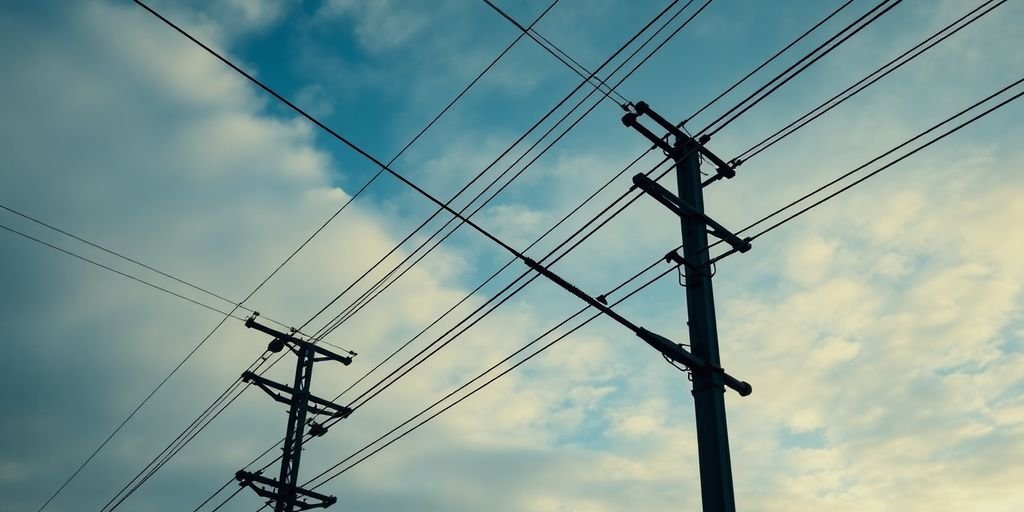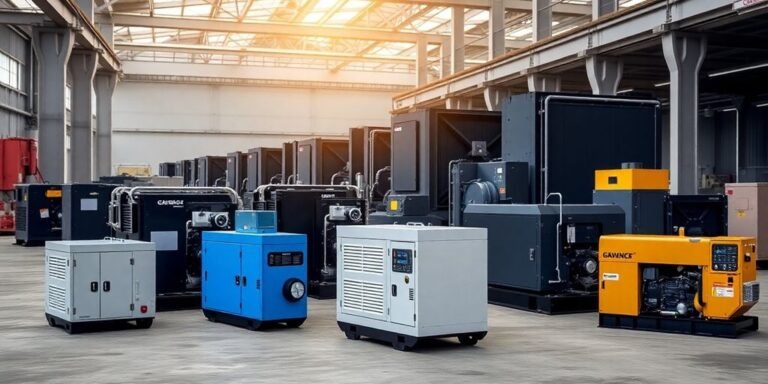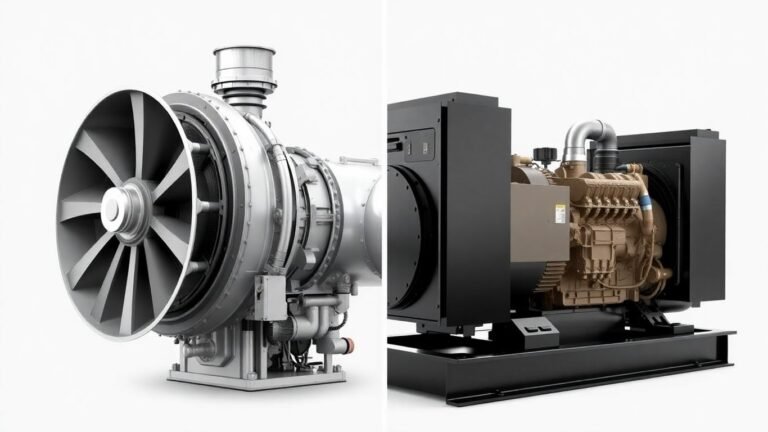Generators and CenterPoint’s Proposal: Will Ratepayers Be Made Whole for Unused Units?
So, CenterPoint has this big proposal out there, and folks are wondering if it actually helps customers who got stuck paying for generators that didn’t even work when we really needed them. We’re talking about a lot of money tied up in these things. This article looks into what CenterPoint is suggesting, why these generators became such a headache, and what it all means for your electricity bill and Texas’s power grid. It’s a bit of a complicated situation, but we’ll try to break it down simply.
Key Takeaways
- CenterPoint wants to lower monthly bills for its customers, possibly by about $2 by 2027, by taking the cost of those big emergency generators out of the rates.
- A big issue is that CenterPoint leased these non-mobile generators for over $800 million, and they didn’t do anything during storms like Hurricane Beryl and the Derecho.
- The ERCOT board has given the green light for a plan that involves moving these generators to San Antonio and CenterPoint not making any money from them for a couple of years.
- Texas lawmakers and the Public Utility Commission (PUC) are keeping a close eye on CenterPoint, with the Lieutenant Governor pushing to make sure customers don’t get stuck with the bill for these unused units.
- There are questions about CenterPoint’s contract for these generators, including whether it can be ended early and claims that the company might have given out misleading information.
CenterPoint’s Proposal for Ratepayer Relief
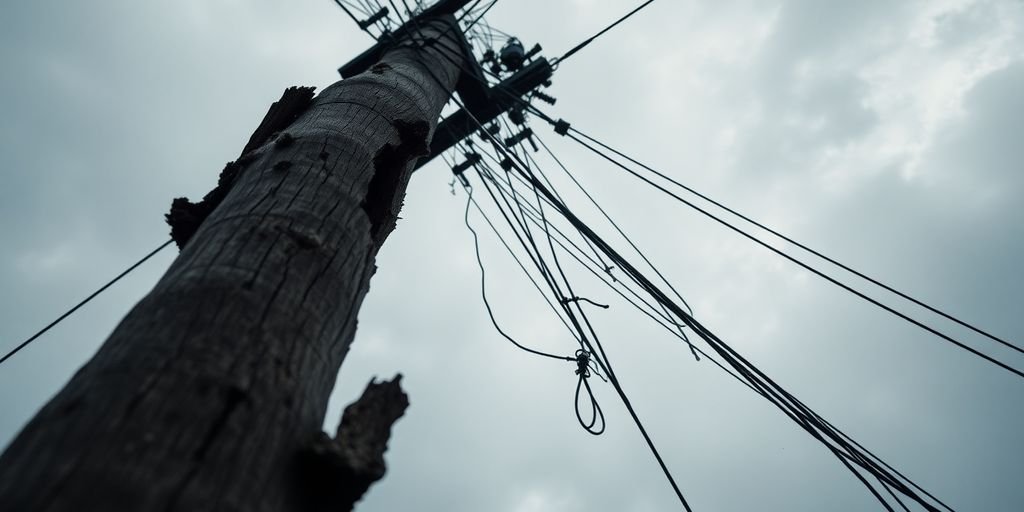
Lowering Monthly Bills for CenterPoint Customers
CenterPoint Energy has put forward a plan designed to ease the financial burden on its customers. The core of this proposal involves removing the costs associated with large, leased emergency generation units from customer bills. Company representatives have stated that this initiative could lead to savings for the average residential customer, potentially reaching up to $2 per month by 2027. This reduction aims to provide some relief to households facing rising energy costs. The plan focuses on reducing customer bills in the coming years.
Addressing Costs of Unused Generators
A significant part of CenterPoint’s proposal tackles the issue of unused generators. These generators, leased at a considerable expense (over $800 million), proved ineffective during events like Hurricane Beryl and the Derecho. The plan seeks to rectify this situation by removing the financial burden of these underutilized assets from ratepayers. This involves a strategic shift in how these assets are managed and funded, aiming to ensure that customers are not paying for resources that do not contribute to grid reliability during critical times.
Commitment to Customer Savings
CenterPoint’s proposal underscores a commitment to delivering tangible savings to its customer base. This commitment is reflected in several key actions:
- Removing costs of emergency generation units from monthly bills.
- Working with ERCOT to move the units to San Antonio.
- Forgoing revenue on specific units to reduce impact on customers.
The company aims to work closely with elected officials, regulators, and industry partners to facilitate the relocation of these units to San Antonio. This move is intended to fulfill their promise of lowering costs for customers while simultaneously contributing to the overall reliability of the Texas power grid. The focus is on ensuring that ratepayers are not burdened with expenses for assets that do not provide value during emergencies.
The Unused Generator Controversy
The story of CenterPoint’s leased generators is full of twists. What started as a plan to bolster the state’s power grid after Winter Storm Uri has turned into a major headache for the company and a source of frustration for ratepayers. The core issue? A fleet of generators, costing over $800 million, sat idle during and after Hurricane Beryl, raising serious questions about their utility and the decisions that led to their acquisition.
Leasing Non-Mobile Generators
One of the biggest points of contention is the type of generators CenterPoint chose to lease. Many of these units were not truly mobile, despite being described as such. This severely limited their ability to be deployed effectively during emergencies, especially hurricanes. The idea was that these generators could be quickly moved to areas experiencing outages, but their lack of mobility made that nearly impossible. This raised questions about the initial planning and whether the right type of equipment was selected for the job.
Generators Useless During Storms
During Hurricane Beryl, the generators remained unused. This fueled public anger and prompted investigations into why these expensive assets weren’t providing any benefit during a critical time. The fact that the generators couldn’t be used during the storm exposed a major flaw in CenterPoint’s strategy. It became clear that the generators were not suitable for hurricane response, despite claims to the contrary. This led to accusations that CenterPoint misled regulators and the public about the generators’ capabilities.
Public Utility Commission Scrutiny
The Public Utility Commission of Texas (PUC) has been actively investigating CenterPoint’s handling of the generator leases. Commissioners have expressed strong concerns about the lack of prudence in the decision-making process and the potential for ratepayers to bear the financial burden of these unused assets. The PUC’s investigation is ongoing, and they are seeking public input to determine the best course of action. Commissioner Lori Cobos even accused CenterPoint executives of misleading the Commission and the Legislature to get approval for the leases. Lieutenant Governor Dan Patrick has called on the PUC to claw back the money spent on the generators from CenterPoint to ensure ratepayers don’t bear the cost. The Texas Electric News archives include articles about the controversy.
ERCOT’s Role in the CenterPoint Plan
ERCOT Board Approval
The Electric Reliability Council of Texas, or ERCOT, plays a significant role in CenterPoint’s plan to address the controversy surrounding the leased generators. The ERCOT Board of Directors unanimously approved a plan that forms the basis for many of the proposed changes. This approval is a key step in moving forward with measures designed to lower customer bills and improve energy reliability across the state. The plan’s approval signals a willingness from ERCOT to collaborate on solutions to the issues raised by the generator leases.
Moving Units to San Antonio
One of the central components of the plan involves relocating 15 large generation units, each capable of powering approximately 30,000 homes, to the Greater San Antonio area. This move is intended to provide critical generation capacity and help avoid potential power shortfalls. CenterPoint is prepared to send these units, which range from 27MW to 32MW, subject to finalizing documentation with ERCOT and the service provider. This relocation aims to address concerns about the units’ lack of use during past weather events and contribute to overall grid stability. It’s a big change to trifuel generators in the state.
Forgoing Revenue on Units
As part of the agreement with ERCOT, CenterPoint will forgo any revenue or profit from these 15 large units for up to two years. This decision is a significant concession aimed at reducing the financial impact on customers. By not profiting from these units, CenterPoint aims to demonstrate its commitment to lowering costs for ratepayers and improving energy reliability. This move is directly tied to the proposal presented to ERCOT and reflects a willingness to absorb financial losses in the short term to achieve long-term benefits for customers.
This agreement with ERCOT is a crucial step in addressing the issues surrounding the leased generators. By moving the units to San Antonio and forgoing revenue, CenterPoint aims to demonstrate its commitment to both customer savings and improved energy reliability for the state of Texas.
Legislative and Regulatory Oversight
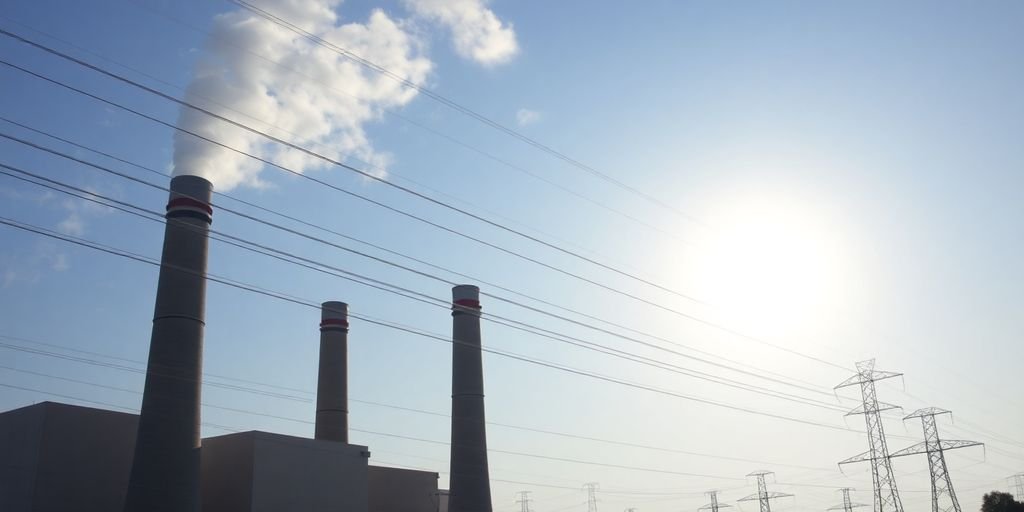
Testimony Before the Texas Senate
The Texas Senate has taken a keen interest in CenterPoint’s generator leases. Executives from CenterPoint have appeared before Senate committees to explain the rationale behind the leases and address concerns about their cost-effectiveness. These hearings provided a platform for lawmakers to question the company’s decisions and scrutinize the details of the contracts. The testimony before the Texas Senate has been crucial in shaping the legislative perspective on this issue.
Lieutenant Governor’s Advocacy
Lieutenant Governor Dan Patrick has been a vocal critic of the generator leases. He has publicly called on the Public Utility Commission (PUC) to claw back the money spent on the generators from CenterPoint, arguing that ratepayers should not bear the financial burden of what he views as questionable investments. His advocacy has put additional pressure on the PUC to thoroughly investigate the matter and consider all available options for protecting consumer interests. It’s a pretty big deal when the Lieutenant Governor gets involved, and it definitely ups the ante for everyone involved.
Ongoing PUC Investigation
The Public Utility Commission of Texas (PUC) is currently conducting an ongoing investigation into CenterPoint’s handling of Hurricane Beryl and the broader issue of the generator leases. The PUC has issued requests for public comment, seeking input from ratepayers and other stakeholders to inform its assessment. The investigation aims to determine whether CenterPoint acted prudently in entering into the lease agreements and whether the costs associated with the generators are justified.
The PUC’s investigation is a multi-faceted process, involving a review of contracts, financial records, and operational data. It also includes testimony from CenterPoint executives, independent experts, and members of the public. The outcome of the investigation could have significant implications for CenterPoint’s future operations and its relationship with ratepayers.
Here’s a quick rundown of what the PUC is looking into:
- The prudence of the lease agreements.
- The actual utility of the generators during emergencies.
- Whether CenterPoint provided accurate information to regulators and lawmakers.
- Potential remedies to protect ratepayers from unnecessary costs.
Impact on Texas Energy Reliability
Meeting Current and Future Energy Needs
Texas has been feeling the heat (literally!) when it comes to energy. CenterPoint’s proposal aims to help meet both our current and future energy demands. The plan involves potentially moving 15 large generation units to the San Antonio area. These units were initially acquired after the infamous Winter Storm Uri in 2021. The goal is to provide extra generation capacity and reduce the risk of power shortfalls, which is something we all want to avoid.
Providing Critical Generation Capacity
Each of these generation units is pretty powerful. They can each provide enough power for approximately 30,000 homes. That’s a significant amount of energy, and it could make a real difference during peak demand times or during emergencies. It’s like having a backup generator for the entire state, ready to kick in when needed. The hydrogen fuel cells are also a great alternative.
Addressing State Power Shortfalls
Texas has faced some close calls with power shortfalls in recent years. The state’s growing population and increasing demand for electricity mean we need to find ways to boost our energy supply. CenterPoint’s plan is one piece of the puzzle. By adding these generation units to the grid, it could help prevent future blackouts and ensure that everyone has access to the power they need. The proposal to remove the cost of large emergency generation units from customer bills is a welcome step.
It’s important to remember that this is just one proposal, and there are still some details to be worked out. But if it all goes according to plan, it could be a big win for Texas energy reliability.
Challenges to CenterPoint’s Contract
The situation surrounding CenterPoint’s generator leases has become quite complex, raising questions about the initial agreements and their ongoing implications for ratepayers. It seems like what was intended to be a safety net has turned into a financial burden, and untangling it is proving difficult.
Termination Provisions and Deadlines
It appears CenterPoint’s ability to terminate the $800 million-plus leases with Life Cycle Power early hinged on a “prudence determination” by the Public Utility Commission (PUC). Jason Ryan, CenterPoint’s executive vice president for regulatory services, stated that once the PUC’s initial review concluded without appeal, the termination provision based on prudence effectively expired. This means the company is locked into the long-term lease unless the vendor fails to perform. The deadline for acting on this clause seems to have passed at the end of 2023, limiting CenterPoint’s options now.
Allegations of Misleading Information
Commissioner Lori Cobos has voiced serious concerns, even accusing CenterPoint executives of potentially misleading both the Commission and the Legislature to secure approval for these leases. This is a pretty serious accusation. If true, it could have significant repercussions for CenterPoint and the individuals involved. The core of the issue seems to be that the generators, costing ratepayers a fortune, were essentially useless during Hurricane Beryl and the Derecho. This raises the question of whether the true capabilities and limitations of the generators were fully disclosed during the approval process. It’s a mess, to be honest.
Vendor Non-Performance Concerns
Commissioner Cobos highlighted a key issue: because the large leased units haven’t been consistently run, it’s difficult to assess whether they’ll even perform as promised. This creates a catch-22 situation. CenterPoint can only terminate the contract for vendor non-performance, but without regular operation, it’s hard to prove non-performance. It’s like buying a car and only finding out it doesn’t work when you actually need to drive it. The lack of operational data makes it tough to hold the vendor accountable. The Korean generators are at the forefront of energy innovation, offering reliable and portable power solutions.
The situation is further complicated by the fact that ratepayers are essentially paying for equipment that may never be used, or if used, may not even function as intended. This raises serious questions about the due diligence conducted before entering into these long-term lease agreements.
Here’s a summary of the challenges:
- Limited termination options due to expired deadlines.
- Allegations of misleading information provided to regulators.
- Difficulty proving vendor non-performance due to infrequent operation.
Financial Implications for CenterPoint
Over $800 Million in Leased Units
CenterPoint Energy’s decision to lease non-mobile generators has come under intense scrutiny, especially considering the substantial financial commitment involved. The company entered into leases totaling over $800 million for these units. The problem? They proved to be completely useless during events like Hurricane Beryl and the Derecho. This raises serious questions about the prudence of the investment and the potential financial burden placed on ratepayers. The Public Utility Commission is investigating the matter.
No Revenue from Specific Units
As part of the proposed plan to address the issues with the leased generators, CenterPoint Energy has agreed to forgo revenue and profit from 15 of the large units. This arrangement, which could last for up to two years, is contingent on the finalization of agreements with ERCOT and the service provider/operator of the emergency generation units. This move is intended to offset some of the costs associated with the underutilized generators and reduce the financial impact on customers.
Reducing Impact on Customers
CenterPoint is trying to reduce the financial impact on its customers. Here’s how:
- Removing costs of large emergency generation units from monthly bills.
- Potentially saving residential customers around $2 per month by 2027.
- Moving 15 units to the Greater San Antonio area to provide critical generation capacity.
The financial implications for CenterPoint are significant. The company faces the challenge of balancing its commitment to providing reliable energy service with the need to manage costs effectively. The long-term financial health of CenterPoint will depend on its ability to navigate these challenges successfully and make sound investment decisions that benefit both the company and its customers.
So, What’s the Real Deal for Ratepayers?
After all this back and forth, it’s still a bit fuzzy if CenterPoint’s plan truly makes things right for everyone. Sure, a couple of bucks off your bill sounds nice, but when you think about the huge amount of money spent on those generators that just sat there, it makes you wonder. Moving the units to San Antonio is one thing, but the core issue of how these decisions get made, and who pays when things go sideways, is still out there. It seems like the conversation about making ratepayers “whole” is far from over, and folks will be watching to see if these changes actually add up to a fair shake in the long run.
Frequently Asked Questions
What is CenterPoint’s main idea for helping its customers?
CenterPoint is suggesting a plan to lower monthly power bills for its customers in Houston. They want to remove the costs of some large emergency power units from customer bills. This could save an average customer about $2 per month by 2027.
Why are these power units causing problems?
CenterPoint spent over $800 million on these large power units, which were meant to help during emergencies. However, they were not useful during recent storms like Hurricane Beryl and the Derecho, causing many people to question why the company leased them.
What is ERCOT’s part in CenterPoint’s plan?
The ERCOT Board, which manages Texas’s power grid, has agreed to a plan where CenterPoint will move 15 of these large power units to the San Antonio area. This is meant to help improve the state’s overall power supply.
Are government officials involved in this situation?
Texas leaders, including Lieutenant Governor Dan Patrick, are closely watching CenterPoint. They want to make sure customers don’t have to pay for the unused power units. The Public Utility Commission (PUC) is also looking into how CenterPoint handled things during Hurricane Beryl.
How might this plan affect Texas’s power supply?
By moving these large power units to San Antonio, CenterPoint hopes to add more power to the state’s grid. This could help Texas have enough electricity, especially during times when power is scarce, and make the system stronger for future needs.
What are the problems with CenterPoint’s contracts for these power units?
CenterPoint says it’s hard to end the contracts for these power units early. There were rules in the contract that would have allowed them to cancel, but those rules are no longer active. Some officials believe CenterPoint may have given wrong information when they got approval for these leases.

